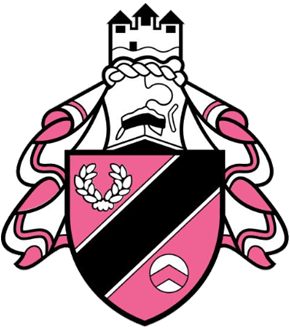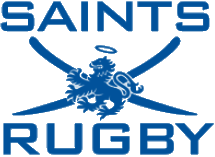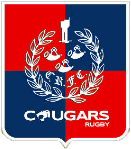Stirling County RFC is a Scottish rugby union club based in Stirling. The club plays its home games at Bridgehaugh. It runs a number of sides. The professional men's side competes in the Super 6 as the Stirling Wolves, the women's side competes in the Scottish Womens Premiership.

Ayr Rugby Football Club is a rugby union club. Its professional men's side currently plays as Ayrshire Bulls in the Super 6 competition; and its women's side play in the Scottish Womens National One. The club also runs a "Club XV" which competes in the Tennent's National League 1, a 2nd XV "Ayr-Millbrae", which plays in the SRU West Reserve League Division 1, and various age group teams, from age 4, up to age 18.

Kirkcaldy Rugby Football Club is a rugby union club from Kirkcaldy, Fife, Scotland. The men's side currently plays in Scottish National League Division Two and the women's side currently plays in Scottish Womens Midlands & East One.

Rugby union in Scotland is a popular team sport. Scotland's national side today competes in the annual Six Nations Championship and the Rugby World Cup. The first ever international rugby match was played on 27 March 1871, at Raeburn Place in Edinburgh, when Scotland defeated England in front of 4,000 people. Professional clubs compete in the United Rugby Championship, European Rugby Champions Cup and European Rugby Challenge Cup, while the Scottish League Championship exists for over 200 amateur and semi-professional clubs, as does a knock-out competition, the Scottish Cup. The governing body, the Scottish Rugby Union (SRU), is one of the ten first-tier member nations of World Rugby.
The Scottish National League Division One is the second tier of the Scottish League Championship for amateur rugby union clubs in Scotland.
Glasgow Hutchesons Aloysians Rugby Football Club, often abbreviated to GHA and colloquially referred to as G-HA!!, is a rugby union club based in the Giffnock area of East Renfrewshire, Scotland. The club plays its home matches at Braidholm and currently competes in the Scottish National League Division One, which is the second tier of Scottish club rugby. GHA competed in the premiership from 2019/20 until the 2022/23 season which saw them being relegated to National League Division 1.

Dalziel Rugby Football Club, formerly known as Dalziel High School Former Pupils Rugby Club, currently has a playing and social membership hailing from Motherwell, Wishaw, Bellshill and other parts of Lanarkshire, Scotland. Historically the club was closely associated with Dalziel High School in Motherwell from which it takes its name. A number of current players are former pupils of Dalziel High School. However, during the 1990s it was felt that the club should drop the "former pupil" tag and be known, in what was felt to be a more inclusive manner, as Dalziel RFC.
The Grampian Alliance League was a small rugby union competition participated in by clubs in the Grampian region. Together with the Highland Alliance League, it was one of the few remaining leagues not part of the Scottish rugby union system, and therefore neither it nor its clubs were part of the Scottish League Championship structure.
The Scottish National League Division Two is the third tier of the Scottish League Championship for amateur rugby union clubs in Scotland.

The University of St Andrews Rugby Football Club is an affiliated member of the University of St Andrews Athletic Union in Fife, Scotland. The club runs four men's and two women's teams, which play in the university leagues.
Highland Rugby Football Club is a rugby union amateur club from the city of Inverness that compete in the Scottish National League Division One. They have a number of teams taken from different age groups including micros and minis, S1 and S2, Under-15, Under-16, Under-18 and senior first and second teams. They play their rugby at Canal park in Inverness.
Aberdeen University Rugby Football Club (AURFC) is the rugby union team at the University of Aberdeen in Scotland. The men's team play in Caledonia North Three; the women's team play in the university leagues.

Corstorphine Cougars RFC is an Edinburgh rugby union club. Formed in 1950, the club represented the western Edinburgh suburb of Corstorphine. In 2017 the club was rebranded as Corstorphine Cougars. The Women's side play in Scottish Womens Premiership, the Men's side play in East Division 2.
Falkirk Rugby Football Club is a rugby union club based in Falkirk, Scotland. They currently compete in Scottish National League Division One, the second tier of Scottish club rugby. The club play their home matches at Horne Park.
Harris Academy FPRFC is a rugby union club based in Dundee, Scotland, that was founded for the former pupils of Harris Academy on 5 November 1926. The club ceased to exist throughout the latter part of the 1990s and the early 2000s due to dwindling numbers. However, the club was reformed in August 2007 by former players combined with a large senior squad of players who had left the school the previous season. Those places had had a successful tour to Latvia in which they beat a local club side before beinvolved beaten by a Latvian under 19 select squad.
Kelvinside Academicals is a former rugby union team that played their home games at Balgray Playing Fields, Glasgow, Scotland.
Garioch RFC is a rugby union club based in Inverurie, Scotland. The Men's team currently plays in Caledonia Division One. The Women's team currently plays in the Scottish Womens Premiership league.
Aberdeenshire RFC is a rugby union club based in Woodside, Aberdeen, Scotland. The Men's team currently plays in Caledonia North Two. The Women's team currently plays in Caledonia North Regional League Division 1.
Mackie RFC is a rugby union club based in Stonehaven, Scotland. The Men's team currently plays in Caledonia North Two.
Stirling University RFC is a rugby union club based in Stirling, Scotland. The club operates a men's team and a women's team. Both currently play in the university leagues.





